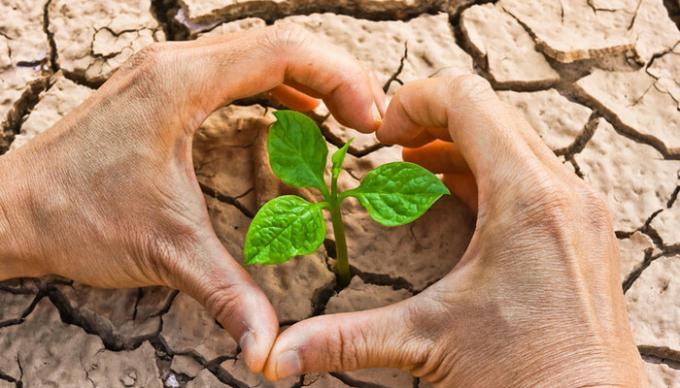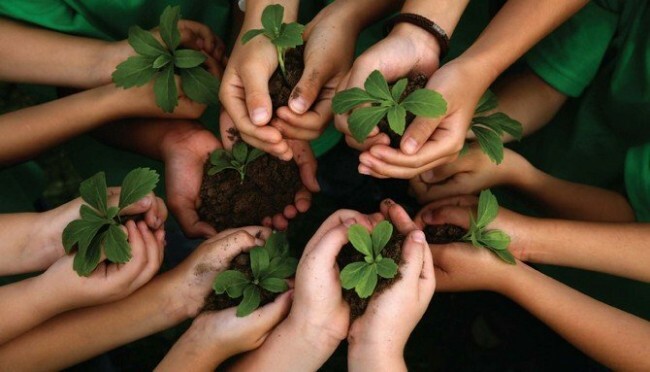
We selected in this post several suggestions for Games and Dynamics on the Environment, to work with students in the early grades. (Elementary Education and Early Childhood Education). They are excellent resources for working on the Environment Week, which is celebrated from June 1st to June 5th (Environmental Day).
O Environment Day or World Environment Day is celebrated throughout Brazil, on the day June 5th, and it is not considered a National holiday.
The creation of the date was in 1972, due to a meeting promoted by the UN (United Nations), in order to address environmental issues, which encompass the planet, better known as the Conference of Nations United.
The conference brought together 113 countries, in addition to 250 non-governmental organizations, where the main agenda addressed the degradation that man has caused to the environment and the risks to its survival, where biological diversity should be preserved above any possibility.
The importance of the date is due to the discussions that open about air, soil and water pollution; logging; reduction of biodiversity and drinking water for human consumption, destruction of the ozone layer, destruction of plant and forest species, extinction of animals, among others.
See more at:
Index

Objective:
Development:
Below are suggestions of sentences that can be completed

Dynamics of Identity and Values, preservation of biodiversity
Divide participants into six subgroups. Each one will be responsible for a part of the doll: head, torso, arms, hands, legs and feet.
Each group will draw a body part and have two questions to answer. The answers must be registered on the posters together with the drawing. In order for groups to have an overview of the dynamics, it is important that they read all the questions before starting the work.
the head: What environmental reality do we see? What do we hear from society about preserving biodiversity?
b) Trunk: How do we feel about environmental degradation? How do we feel about the student's role in preserving biodiversity?
c) Arms: How far can we reach with our action? With whom (people, entities, etc.) can we go hand in hand in the preservation of biodiversity?
d) Hands: What commitments can we make as a group to preserve biodiversity? What tools do we have available at school to spread our ideas?
e) Legs: What paths do we want to take in developing actions to preserve biodiversity? What support do we have (people, materials, finances, etc.) to develop an action?
f) Feet: What actions can we take involving our school in preserving biodiversity? What result do we want with our action?
Dynamics published with the article “Student Week and Youth Participation” in issue No. 379, Mundo Jovem newspaper, August 2007, page 3. Source: Extracted from the booklet “Student Week – One must take care of life”, 2007. PJE-PJB.
The objective is to show through a staging, a play, the contexts where we waste resources and make people, through these examples, able to visualize their points of improvement in the form of consume. To perform it, the group must choose from 3 to five scenes where we waste or misuse resources. Brushing teeth with the faucet open, taking a shower for 1 hour, throwing food away, using plastic bags and washing the sidewalk with water: these are some examples of waste.
I also recommend:
Objective:
Development:
Closure:

To rescue stories, legends, poems etc related to the environment.
It may seem strange, but these days, many children do not know where food comes from, how it is grown and grown. Thus, the intention of this dynamic is to teach about its origin and also how to plant and care for a small plant. To apply it, it will be necessary to have seedlings of various plants, soil, water, jars and gardening objects such as shovels. The instructor must explain where that food comes from, its importance for health and the environment, and invite the children to plant their own seedling, monitor its growth and take care of it.

Search for solutions to ecological challenges.
This game aims to encourage people to think collectively about ecological challenges.
Materials: two dice, two players, one track (path) drawn in chalk.
1 - Preparation:
2 – Game:
The purpose of this dynamic is to encourage reflection in the participants, so that this leads to different actions in the daily lives of the people involved. In an open space, together, in a circle, sitting or standing, all participants should be asked to raise a current environmental issue. Each person should be asked to reflect on the question is to think of solutions for it. Then each person must share the imagined solution and justify why it would be good for nature and human beings. Others should interact and expose their suggestions to improve the idea. Meanwhile, an outsider can record the dynamics and record the suggestions, which the people themselves can then use to improve their lives.
A reflection through childhood photo
Goals:
Material:
Development:
Closure: The activity coordinator asks the group what each person felt when performing the activity.
Subscribe to our email list and receive interesting information and updates in your email inbox
Thanks for signing up.
